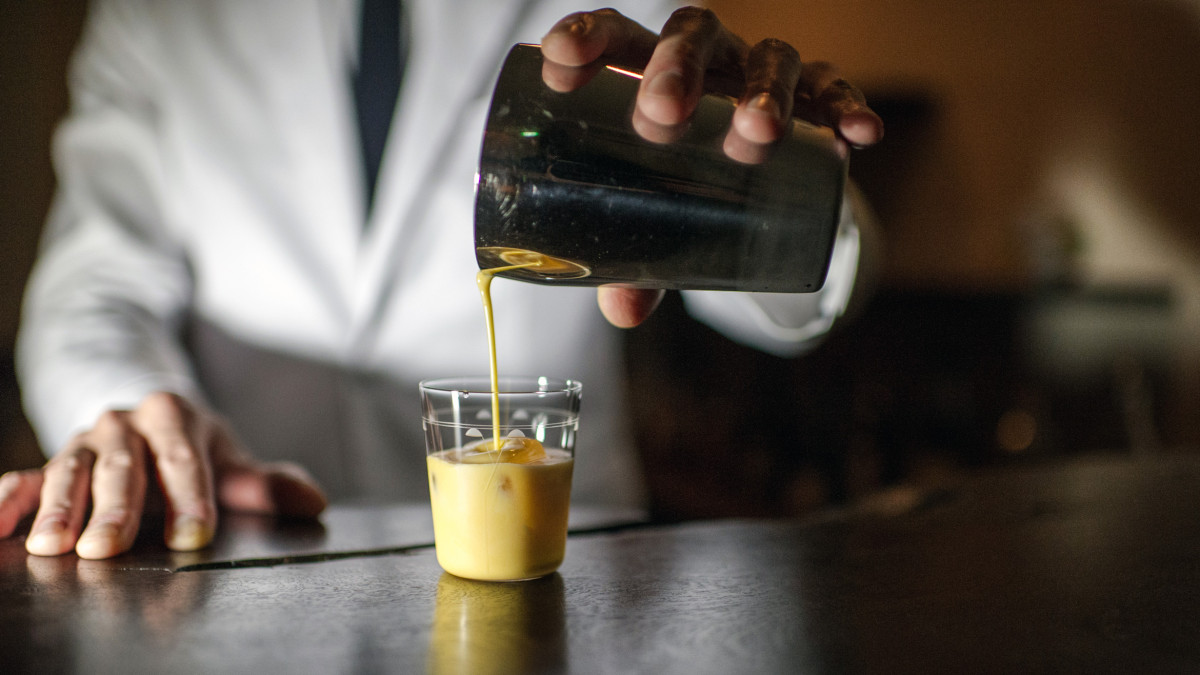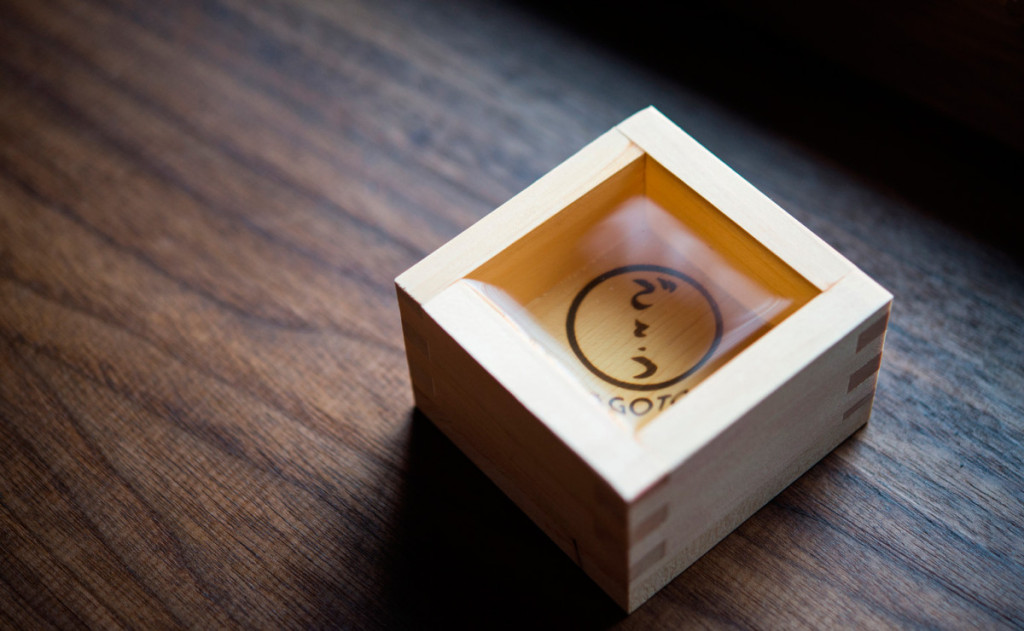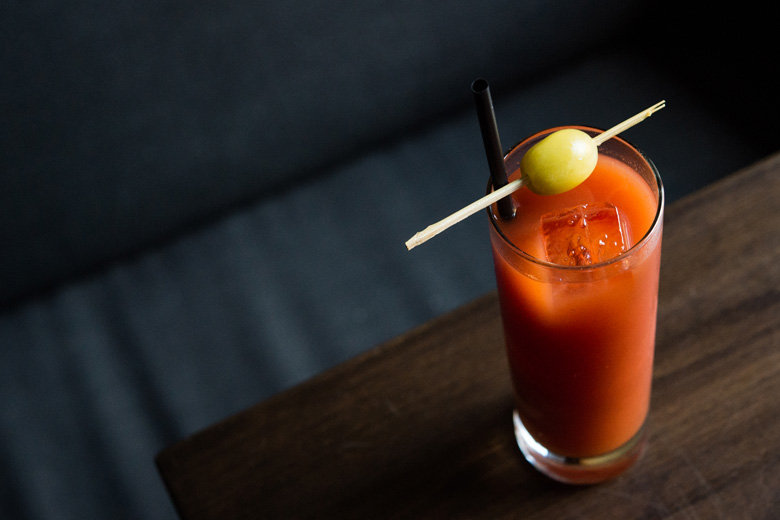
#357
WHAT IS A JAPANESE STYLE COCKTAIL BAR?
05 May 2016 By David Fuhrmann-Lim
Americans have been enamored of the precision and ritual of Japanese bartending for decades. But what exactly defines the Japanese style? Christopher Ross on its history and evolution.
BY CHRISTOPHER ROSS
Bar Goto, the new Lower East Side bar opened by veteran bartender Kenta Goto, is the latest addition to New York City’s firmament of serious cocktail dens. An ode to Goto’s native country of Japan, the bar has the feel of a quiet, civilized Tokyo watering hole, with dimly lit wood counters and shelves, Goto’s grandmother’s kimono hanging on the wall and a drink list that combines classic cocktails with Asian accents, like the Sakura Martini—a delicate mixture of sake, gin, maraschino liqueur and cherry blossom.
The press has celebrated Bar Goto as a bastion of Japan’s cocktail culture, with New York magazine declaring that it, “may be the closest thing New York has seen to a Japanese-style cocktail bar since Angel’s Share”—the legendary East Village cocktail bar, which opened in 1994 with a staff of bartenders who’d trained in Japan.
At first glance, this description seems to ring true. But it raises the question of what exactly a “Japanese-style” bar is. Goto, for one, is careful to distinguish his venue from an authentic Japanese cocktail institution. “Bar Goto is definitely not Angel’s Share number two,” he says. “I’m not an ambassador of Japanese bartending. Bar Goto is a New York bar with Japanese flair—that’s the best way to describe it.”
In fact, some experts contend that exceptions like Angel’s Share aside, a true Japanese bar could never be wholly recreated in the States due to a surfeit of cultural differences, in the same way that any translation between languages is destined to lose aspects of the original meaning. Yet in spite of the differences, Japan and the United States have formed an interdependent relationship throughout the course of cocktail history, trading influences and debts, their intertwining mixological DNA creating a better, stronger product than either country could have created alone.
Goto never trained as a bartender in Japan. His time behind the stick has been exclusively in the States, though he’s visited and drank at many Japanese bars. He rose to prominence working under Audrey Sanders at New York City’s Pegu Club. At the same time as he was mastering the city’s approach to craft cocktails, he was also studying books on Japanese bartending and teaching himself the national style through visits and YouTube videos, mimicking their techniques down the graceful maneuvering of jiggers and adapting their rigorous dedication to basic bartending skills: shaking, stirring, presentation.
While most of the bartenders from whom he was learning the Japanese craft held court in small, quiet, unrushed bars in the Ginza district of Tokyo, Goto was working in one of the busiest cocktail bars in New York, a place that puts a premium on hustle. One evening, he caught three people who had recently visited Japan staring at him at Pegu Club as he mixed drinks in his unique style, Tokyo’s exquisite technique accelerated to Manhattan’s warp speed. “They were like, ‘you’re kind of a hybrid,’” he says.
The irony is that the modern American craft cocktail movement itself is a hybrid of Stateside and Japanese mixology. Though the contemporary cocktail renaissance is often described as a revival of an earlier, brighter stage of American drinking history, it would be more accurately figured as an echo of an echo of a discipline which has bounced between the U.S. and Japan across decades. The synthesis dates back to 1880s, the Golden Age of cocktails in America, when Jerry Thomas reigned and pre-Prohibition classics were being minted left and right in San Francisco and New York. This period happened to overlap with the Meiji reign in Japan, when the country sent out ambassadors to bring back the best of other global cultures. Among the fruits of those journeys—French cuisine, bespoke British suits—were American cocktails, which the emperor served to his guests as a novelty.

Kenta Goto’s distant riff on the Improved Whiskey Cocktail that combines barley shochu, aged gin and hop liqueur. Photo ©Daniel Kreiger
What happened after Prohibition is no mystery to us: America’s cocktail Dark Ages ended only when one of the late, great maestros of the revival movement, Sasha Petraske, began visiting a small New York bar called Angel’s Share. “Sasha was my regular,” says Shin Ikida, who began working at Angel’s Share in 1996 after training in Japan for six years, and who is now the owner of the bar B Flat. “He would always get classic cocktails—Daiquiris and Old-Fashioneds.”
Unbeknownst to the American bartenders who had been sloshing 7&7s into highball glasses through the ‘70s and ‘80s, on the other side of the globe, Japanese bartenders had been practically the sole keepers of the craft. “In Japan, they really understand craftsmanship,” says Ikida. “At Angel’s Share, for a lot of people it was their first time seeing drinks made that way.”
Stirring, measuring, shaking and preparing drinks with precision—these were the aspects Petraske latched onto and showcased at his bar Milk & Honey, which were henceforth copied all over the world. The rigorously enforced civility and quiet atmosphere, the jazz soundtrack, the hidden entrance and the respect for the art of the cocktail, which at the time were thought to be throwbacks to the age of the American “speakeasy,” were also in fact hallmarks of Japanese bars, which America had gotten a taste of through Angel’s Share.
“Japanese bartending is a time capsule,” says Frank Cisneros—a luminary of New York’s cocktail scene who is currently working and training in Japan—of the bars in Tokyo’s Ginza district, the locus of the country’s cocktail legacy. “Basically, Prohibition never started or ended. For better or worse, the Ginza style is approximately what bartending was in the 1920s, and it’s never deviated from that.”
The adherence of Japanese bartenders to the original turn-of-the-century cocktail style, their focus on consistency and the lack of other influences has led to an almost crypt-like level of preservation. “They don’t look to other people,” says Toby Cecchini, who has visited Japan a few times and owns Long Island Bar in Brooklyn. “They consider themselves the best in the world.”
It’s a phenomenon compounded by the fact that many of the most highly regarded, old-school cocktail bartenders in Japan do not speak English and have no desire to proselytize. Hidetsugu Ueno of Bar High Five in Tokyo has become an ambassador for Japanese bartending largely by virtue of his ability to speak English. Kazuo Uyeda, the other best-known Japanese bartender in the States and the inventor of the “hard shake,” uses a translator.
While the single-minded focus on form, handed down from master to apprentice in Japan, and the “hermetically sealed scene,” as Cecchini calls it, has proved excellent at maintaining and upholding the otherwise forgotten branch of knowledge, it has also led to a degree of homogeneity, which at times can prove inflexible. “The problem with Japanese bartending is also its greatest asset: an over-attention to detail,” says Cisneros. “Stir a Manhattan made with Ballantine’s exactly 82 times. We fetishize that sort of precision in the West. But introduce a new rye—it freezes the usual Japanese superstar in their tracks.”

Kenta Goto’s Korean hot pot-inspired play on the Bloody Mary, combining shitake mushrooms, miso and Clamato. Photo ©Daniel Kreiger
While Ginza bars remain proudly dedicated to their storied traditions, a new generation of Japanese bars reflect an approach that has disintegrated national barriers and draws influence from all corners of the globe. Bartender Gen Yamamoto, who runs his namesake bar in the Roppongi district of Tokyo, is part of this movement; he opened his operation, which employs seasonal, local produce in drinks, after working in New York at restaurants like David Bouley’s Brushstroke. “We can see more freedom of creativity in Japanese bartending now,” says Yamamoto. “People know more ingredients and have had more dining and drinking experiences all over the world. Inspirations are coming from all around.”
Chefs have learned that even when they’re primarily working in one national cuisine, their approach is strengthened by adapting globally sourced flavors or techniques, whether it’s Jean-Georges Vongerichten blending Japanese influences into his French cuisine, or David Chang applying what he’s learned about pork buns to chicken sandwiches. The same has proved true for craft cocktail bartending. “The current cocktail renaissance is incredible because it’s everyone in the world competing with everyone else,” says Cecchini.
It turns out that to call something a “Japanese-style” bar sends us down a rabbit hole of categorization: a Japanese cocktail bar is essentially an American bar as interpreted by Japanese culture, while a bar like Bar Goto is a Japanese bar as interpreted by a New York City bartender. You could write a book trying to determine where one tradition begins and the other ends. Or you could pull up a bar stool and enjoy the cross-cultural dialogue the way it was meant to be appreciated: with the sip of a cocktail.
Read it at Punch
Like this? Gibson is another refined cocktail bar you should visit

You might be interested in...
ARE OLDER WHISKIES BETTER THAN NEW?
The idea that older spirits are automatically better or higher quality — and therefore worth their higher price tags — is a myth that has long swayed imbibers’ drinking habits. So hear us out.
DRINK HERE: GIBSON
This Cocktail Parlour is Named Gibson, After The Cocktail, Obvs. Do They Live Up To The Name With A Classy and Convivial Offering? Boy, Do They Ever.
5 COOL COCKTAILS TO CAMPAIGN FOR
Feeling oppressed? Here are 5 cocktails to help you rebel.
ARE OLDER WHISKIES BETTER THAN NEW?
DRINK HERE: GIBSON
5 COOL COCKTAILS TO CAMPAIGN FOR